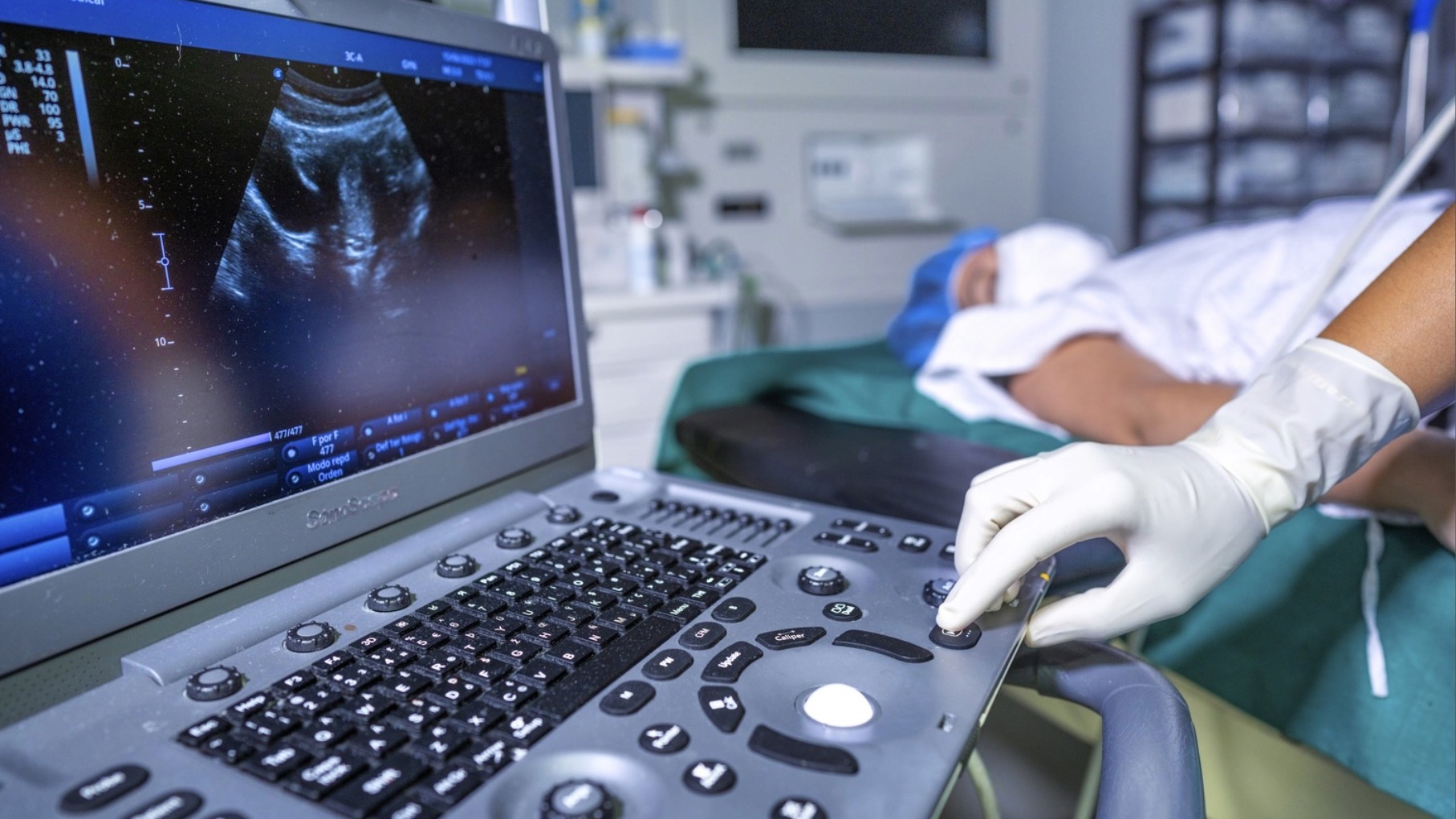Black patients may be missed on common cancer screening, study suggests
An early screening test for endometrial cancer may be missing the disease in many Black patients.

A common screening test for endometrial cancer may not be reliable in Black patients, a new study finds.
The test, which uses ultrasound, is used to see whether or not a patient might need more invasive testing, involving a biopsy. Past research suggested that the ultrasound is very accurate for triaging patients in this way — but now, the new study suggests it may miss a concerning number of Black patients.
"This is a very important study," Dr. Christina Annunziata, a senior vice president of the American Cancer Society who was not involved in the research, told Live Science.
The study, published June 27 in the JAMA Oncology, reveals one factor that might help explain why Black patients with endometrial cancer tend to be diagnosed later and suffer worse outcomes than other populations.
Endometrial cancer, which affects the lining of the uterus, is the most common cancer of the female reproductive organs diagnosed in the United States, affecting more than 65,000 people a year. The disease mainly affects women over age 60, but the incidence of endometrial cancer has been rising for women of all ages for the past two decades.
That rate is increasing more rapidly for Black women than for women of other races. In addition, evidence shows Black women in the U.S. are at least twice as likely to die from certain subtypes of endometrial cancer than white women are.
Sign up for the Live Science daily newsletter now
Get the world’s most fascinating discoveries delivered straight to your inbox.
"One of the things that we know drives that disparity is that Black women are more likely to be diagnosed at later stages of the disease and are more likely to experience delays in diagnosis," Dr. Kemi Doll, lead author of the new study and a gynecologic oncologist at the University of Washington Medicine, told Live Science.
One early marker of endometrial cancer is postmenopausal bleeding, meaning vaginal bleeding that occurs a year or more after a person's final period. When patients experience this symptom, doctors perform an ultrasound in the vagina to look closely at the pelvic area. If the thickness of the uterine lining passes a certain threshold, the patient will then receive a follow-up biopsy. Below this thickness, no further testing is typically done.
"Those [thickness] thresholds are supposed to be 99% to 100% accurate," Doll said. "They should never miss endometrial cancer." Current standards dictate that people with a uterine lining thickness of 0.15 inch (4 millimeters) or greater should get a biopsy.
However, Doll grew suspicious of this test's sensitivity after she and colleagues uncovered in past work that Black women were less likely than white women to receive a biopsy after experiencing postmenopausal bleeding. In another study, she found that Black women who were screened were eight times likelier than white women to have a false-negative result, meaning the test indicated there wasn't cancer when there actually was.
In their new study, Doll and her colleagues probed this trend further by looking specifically at Black patients. They evaluated medical records from nearly 1,500 insured Black patients who had been treated in 10 hospitals in the southeastern U.S. These patients included six gender-expansive individuals, including transgender men.
All the patients had received an ultrasound before undergoing hysterectomy, a surgical procedure to remove the uterus. After the procedure, 210 patients, all cisgender women, were found to have endometrial cancer.
The study revealed that about 10% of the women with endometrial cancer had a uterine lining that fell below the typical threshold that would trigger a follow-up biopsy. If a cut-off of 0.1 inch (3 mm) was used instead, that percentage would have fallen to less than 4%.
Related: The 10 deadliest cancers, and why there's no cure
"This surprised me," Doll said. This ultrasound screening has generally been considered a reliable method to screen for endometrial cancer.
The rate of false-negatives was similar among patients with fibroids, or noncancerous growths in the uterus, that could be spotted via ultrasound. However, the rate was slightly higher in patients whose scans showed only part of their uterine lining or who experienced pelvic pain, which may cause sonographers to cut scans short.
Based on these findings, Doll recommended that Black patients with endometrial cancer symptoms should get a tissue biopsy, to avoid misdiagnosis.
"What we know is that for clinical trials, in general, we have under-representation of diverse population groups," said Marvella Ford, associate director of community outreach and engagement at the Medical University of South Carolina who was not involved in the study. "Unfortunately, when that happens, we don't know how well these techniques and approaches work on different population groups," she told Live Science.
Often, it's assumed people have delayed diagnoses because they're not getting care at all, Doll noted. "What my research has been showing over the years is that even Black women with insurance, who are going to the doctor, are seemingly continuing to get advanced stage diagnoses." The insensitivity of screening tests may help explain that.
Black women also tend to have higher rates of irregular bleeding prior to menopause than other groups do. This irregular bleeding may be misattributed to fibroids, which disproportionately affect Black women, instead of endometrial cancer, Doll said. This may further delay screening.
"If you have any sort of abnormal uterine bleeding, any sort of postmenopausal bleeding or bleeding in between menstrual periods, that is a reason to get screened for cancer," Annunziata stressed.
Doll hopes to further expand the study to better characterize the risk of false diagnosis beyond cisgender women.
"That's going to be increasingly important," she said. "And we continue to want to investigate 'why is this happening?'"
This article is for informational purposes only and is not meant to offer medical advice.
Ever wonder why some people build muscle more easily than others or why freckles come out in the sun? Send us your questions about how the human body works to community@livescience.com with the subject line "Health Desk Q," and you may see your question answered on the website!

Kristel is a science writer based in the U.S. with a doctorate in chemistry from the University of New South Wales, Australia. She holds a master's degree in science communication from the University of California, Santa Cruz. Her work has appeared in Drug Discovery News, Science, Eos and Mongabay, among other outlets. She received the 2022 Eric and Wendy Schmidt Awards for Excellence in Science Communications.










